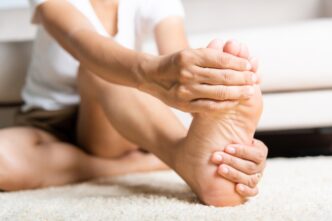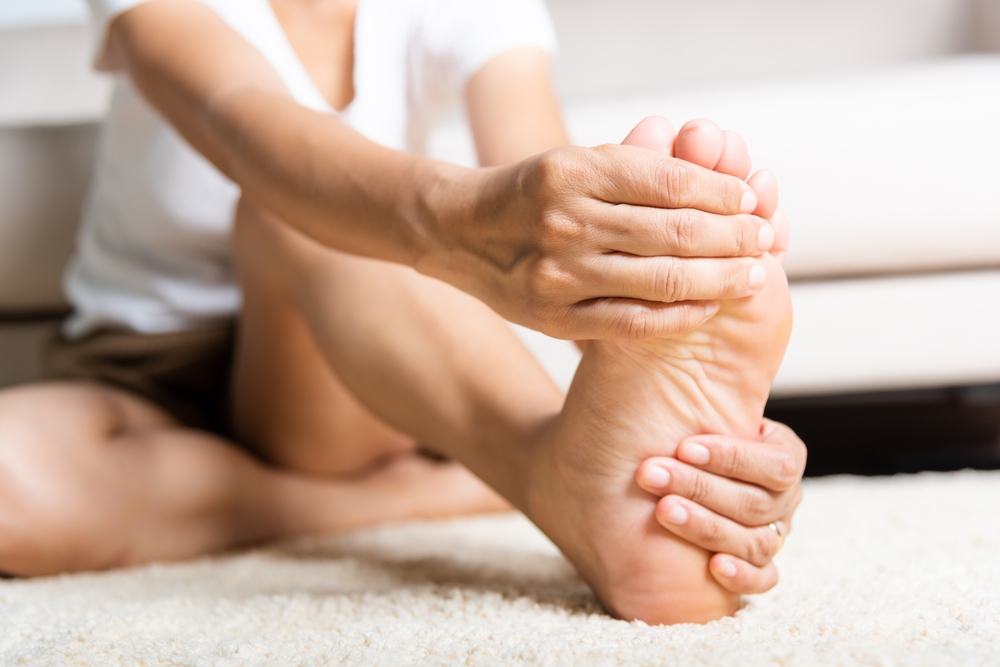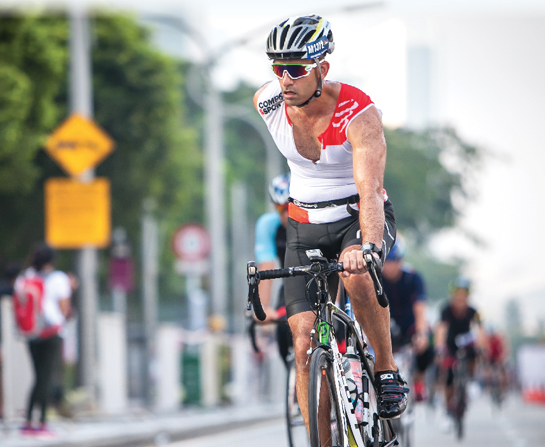Heel pain isn’t just annoying — it can throw off your whole day. Most discomfort stems from the plantar fascia, the band of tissue that supports your foot’s arch. This guide breaks down what plantar fascia is, why it gets injured, and how to manage and prevent pain, so you can walk, run, and stand without wincing every step of the way.
WORDS DR AU YONG PUI SAN
 FEATURED EXPERT FEATURED EXPERTDR AU YONG PUI SAN Sports Medicine Physician Hospital Tuanku Ja’afar |
The plantar fascia is a thick fibrous band of tissue that stretches from the inner underside of the heel bone to the base of the toes.
It provides support to the arch of the foot.
PLANTAR FASCIITIS
When there is too much stress to the plantar fascia, it can become inflamed, thickened and swollen, causing pain on the heel or along the arch of the foot.
- This condition is called plantar fasciitis.
- It is commonly associated with overuse of the planta fascia and usually occurs slowly.
Symptoms
Typically, the usual complaint will be pain at the heel, especially upon waking up in the morning and taking the first step out of bed.
- Similarly, there will be pain in the heel during the first step after a period of prolonged immobilization such as sitting in a car for a long journey or after a movie marathon.
- Early in this condition, the pain eases after walking around.
- If it left untreated, however the pain worsens and lingers throughout the day.
WHAT CAUSES IT?
Some people are more prone to developing this condition, such as:
- People with high body mass index
- Are flat footed
- Have overpronation of the feet
- Have very tight calves, which are typical of people who do not stretch on a regular basis and people who love wearing high heels
| Overpronation is when your foot rolls inward too much as you walk or run, putting extra strain on your arch and the tissue underneath your foot. |
For runners and active folks, several factors can set the stage for plantar fasciitis, turning a little ache into a lingering, sometimes debilitating heel pain.
Running Form
- If your foot rolls in too much when you run (overpronation) or you hit the ground heavily on your heel, it puts extra stress on the tissue under your foot, which can lead to irritation and inflammation.
Shoes
- Wearing the wrong type of shoe for your foot or body type or suddenly switching to minimalist shoes without giving your feet time to adjust can overload your plantar fascia.
- Bigger runners just starting out especially need shoes with enough cushioning and support.
Tight Calves
- Skipping stretching after a run can leave your calves tight, which pulls on your heel and foot and increases your risk of injury.
Weak Calves
- Running alone doesn’t always build strong enough leg muscles.
- Without strength exercises, your plantar fascia can take the brunt of the workload.
Surface
- Hard surfaces like roads and sidewalks hit your feet with every step, increasing stress on the fascia.
Too Much, Too Soon
- Rapidly increasing mileage, frequency, or intensity without giving your feet a chance to recover is a fast track to heel pain.
Speedwork and Hills
- High-intensity runs or repeated hill sessions add extra strain, especially if your feet and calves aren’t ready for it.
In short, plantar fasciitis is often a mix of too much stress on the fascia, not enough support, and skipping the basics like stretching and strengthening. Small adjustments can make a big difference.
MANAGING THE PAIN
If you experience such heel pain and it is causing you much grievance when you run, there are a few things that you can do to ease the discomfort and return to running in a timely fashion.
Get the Problem Diagnosed
- First, you need to make sure it really is plantar fasciitis.
- An ultrasound scan of the plantar fascia should show that the fascia is visibly thickened and swollen.
Ways to Ease the Pain
- Use ice compress after a run, walk, or prolonged standing.
- Use proper footwear with adequate cushioning and support. You may consider inserting silicone insoles to reduce the pressure on the heels or insoles that help reduce flat footedness.
- Stretch both the plantar fascia and your calves. Roll the painful foot over a tennis ball or a golf ball to stretch the plantar fascia when you first step out of bed.
- Strengthen the intrinsic foot muscles and calf muscles. The stronger the muscles, the better you are at preventing re-injury.
- Choose softer running surfaces such as a rubberized track, grassy field, or less technical trail for your walking or running.
- Pull back on the mileage up to 50 percent and taking a break on speedwork and hill repeats, while letting the pain ease off. Once the pain resolves, you can add the mileage back slowly.
- Cross training such as cycling, swimming, and aqua-running can be a great option to maintain cardiovascular fitness while easing off pressure on the foot.
Other Solutions
- Soft tissue therapy or myofascial release therapy on the plantar fascia, calf muscles, hamstrings and glute muscles.
- Wear night splint during sleep to keep the plantar fascia stretched throughout the night.
- Tape the plantar fascia and the calf muscles.
- Topical and/or oral painkillers but avoid taking while exercising.
If You’ve Tried the Above But the Pain Persists
- Corticosteroid injections, ideally done under ultrasound guidance to prevent injecting directly into the plantar fascia.
- Surgery, but this is not ideal for athletes.
| This article is part of our series on tips and advice for leading a healthy lifestyle. |












